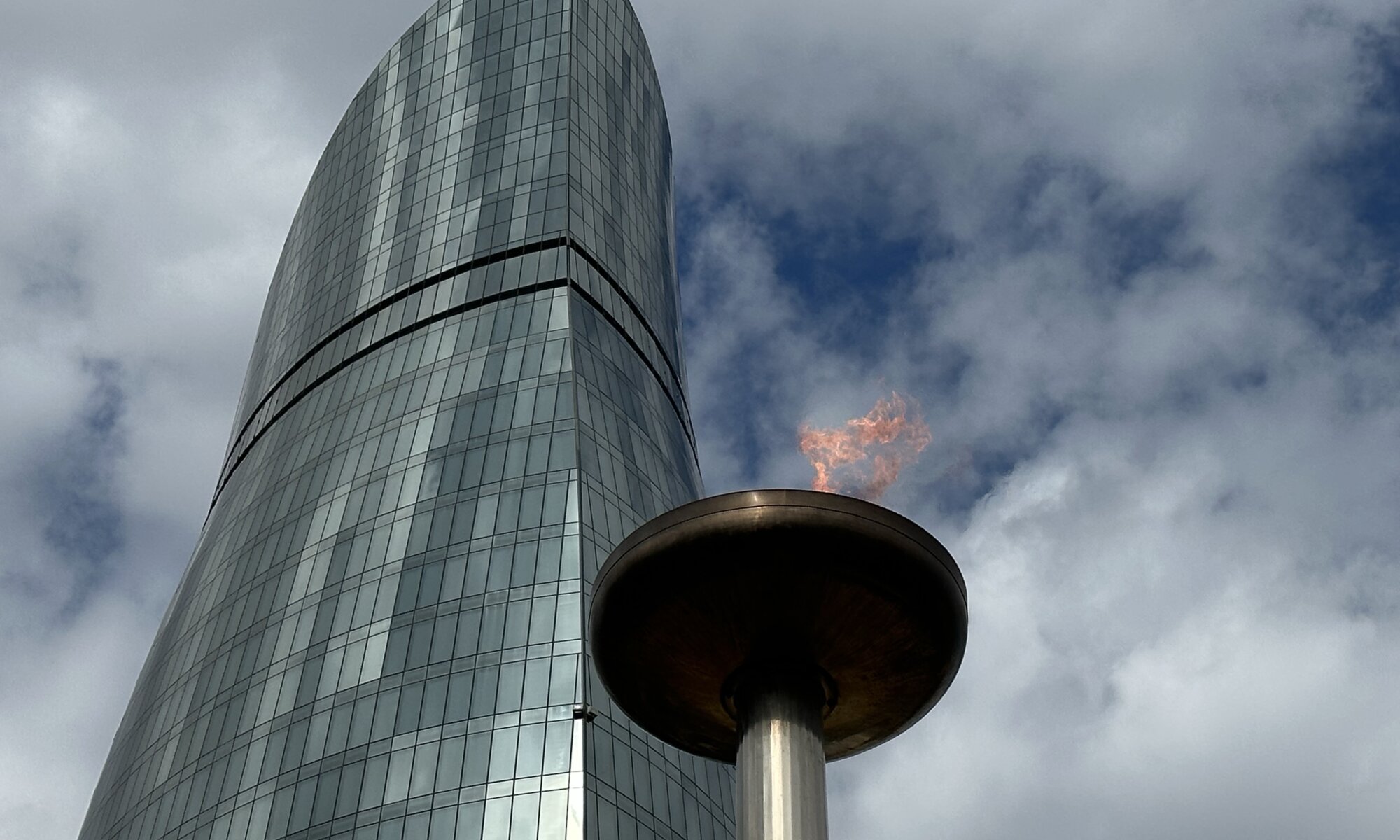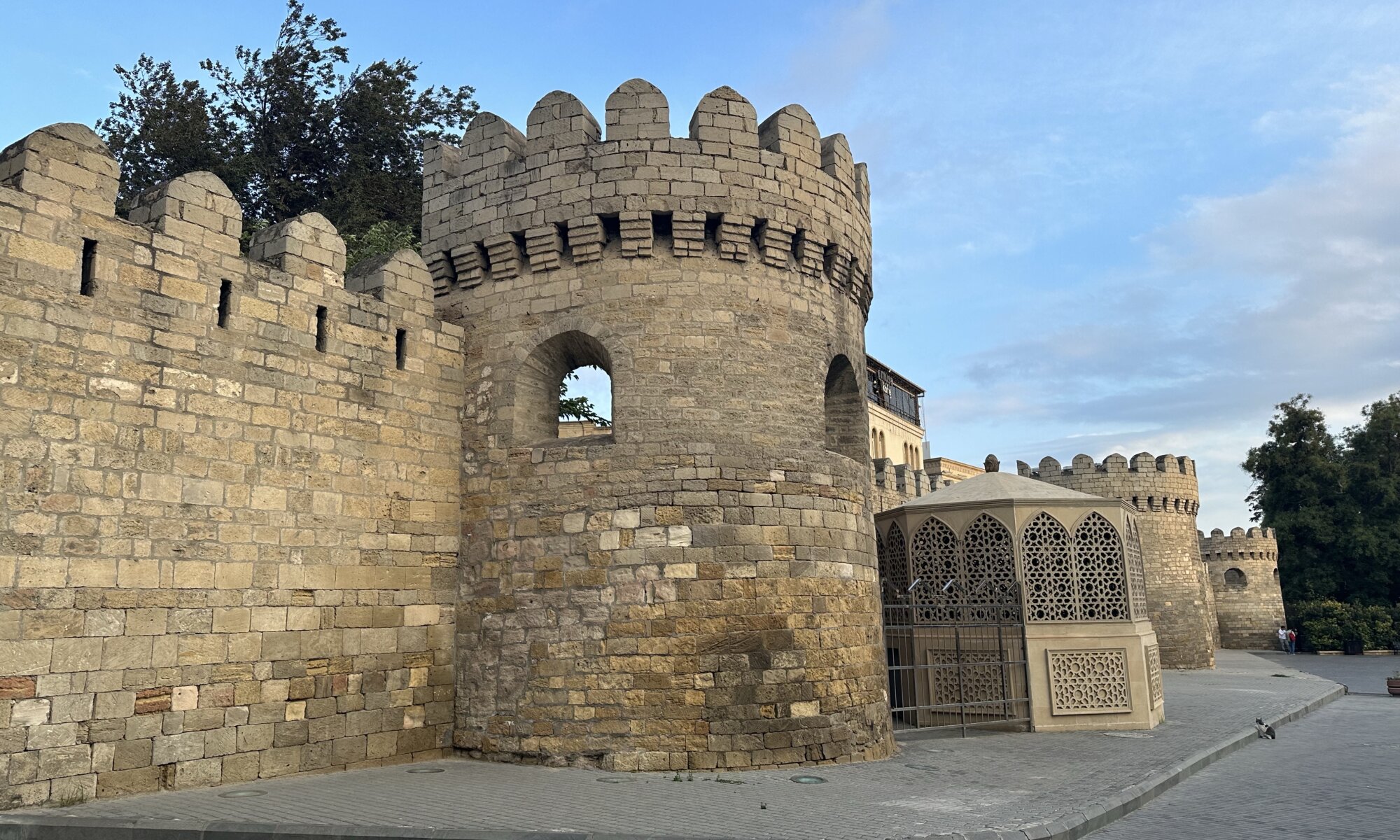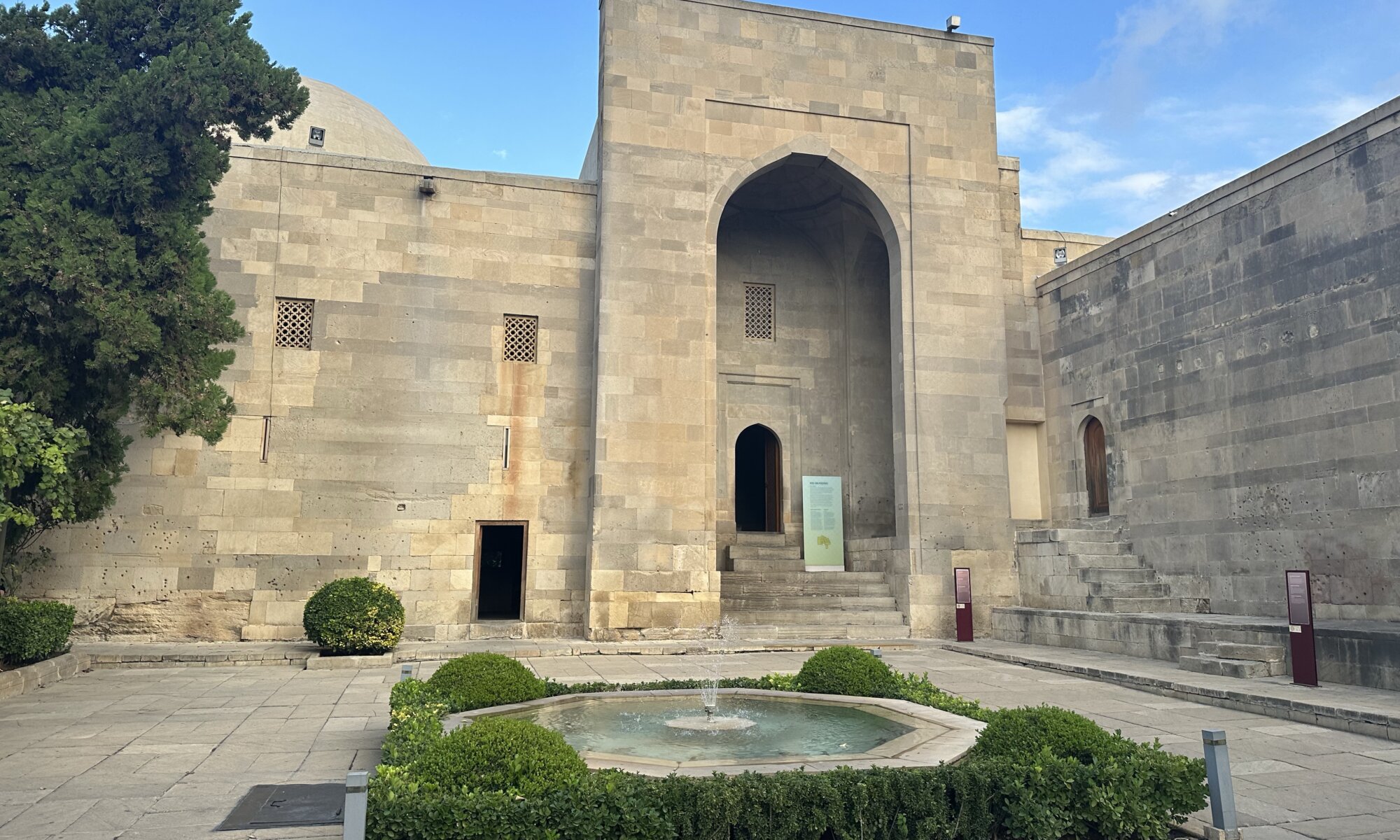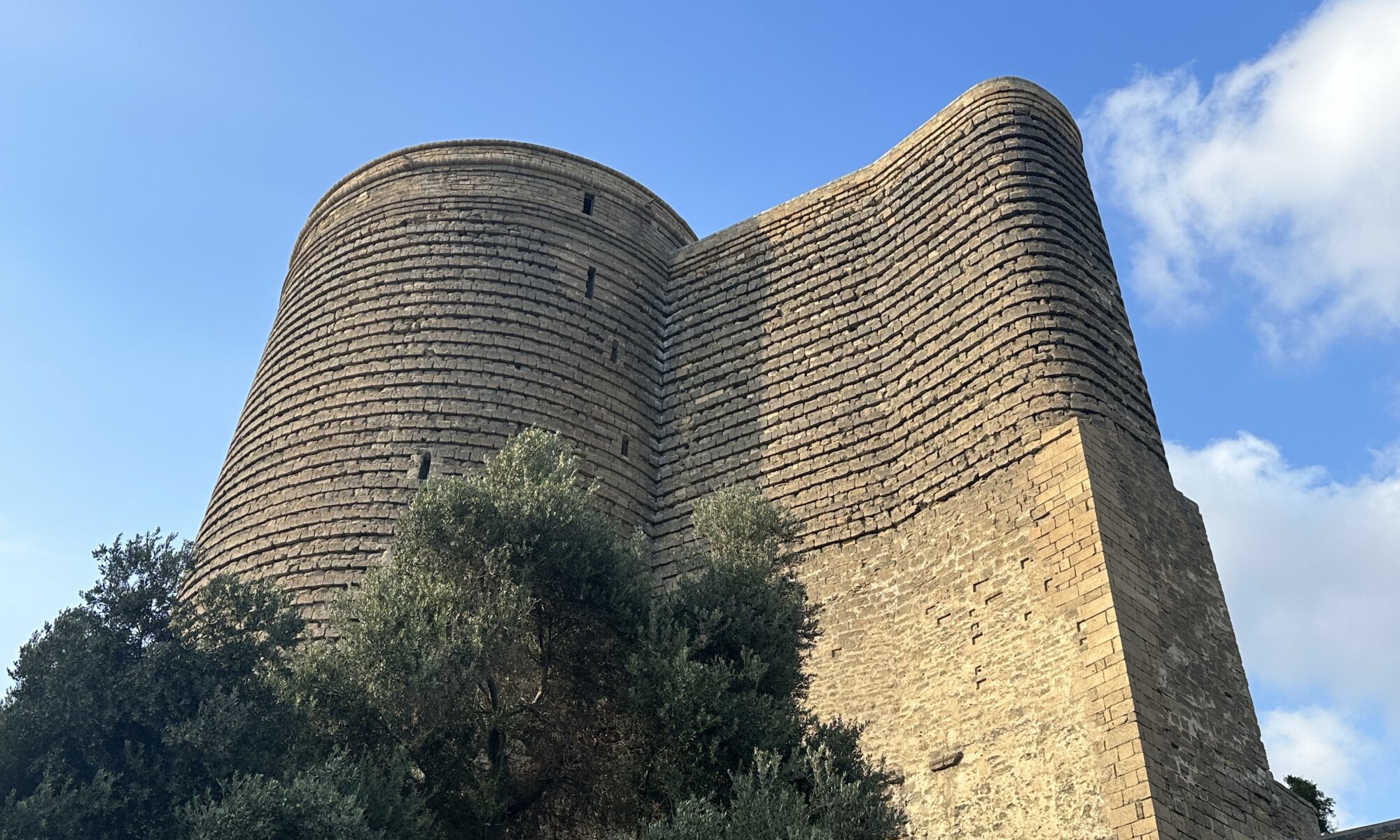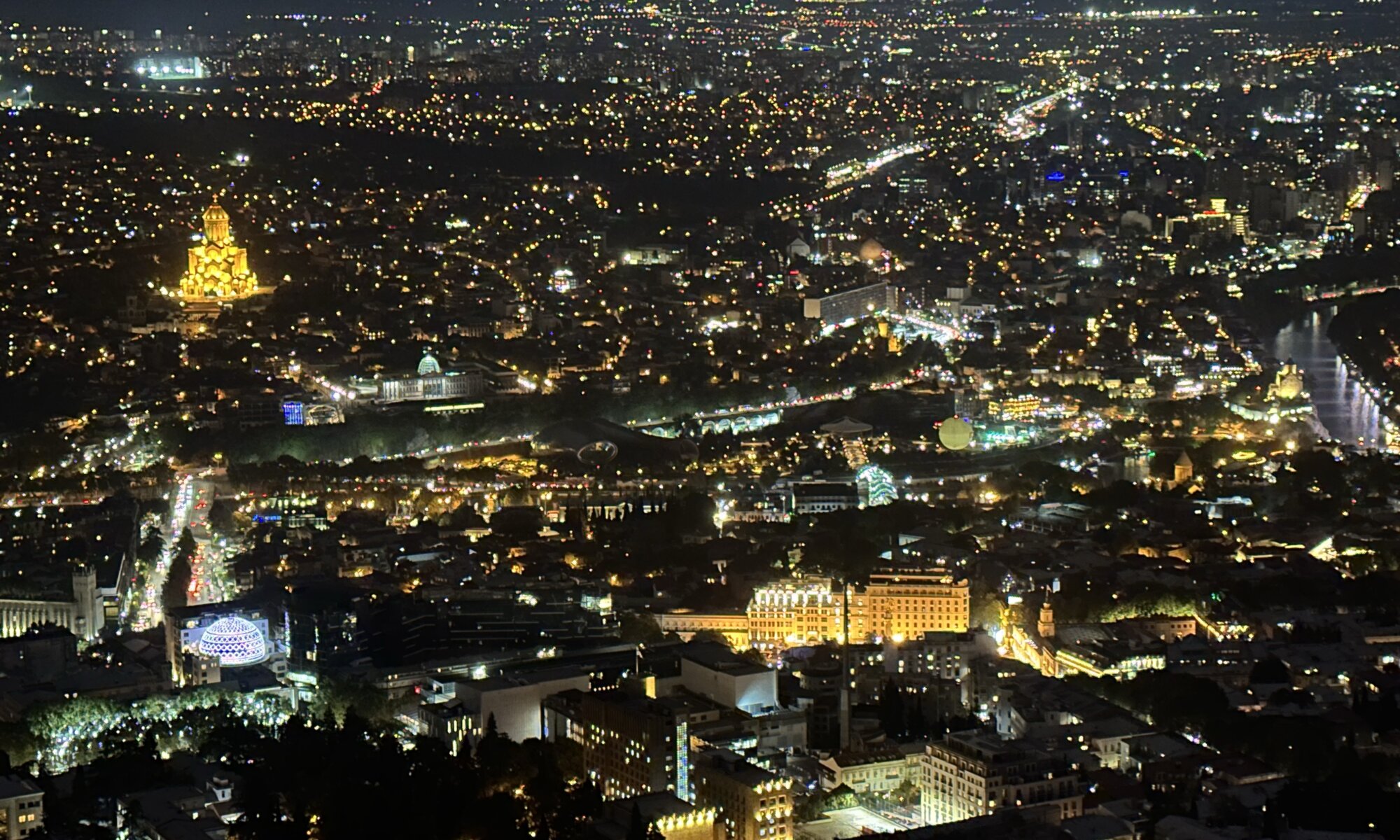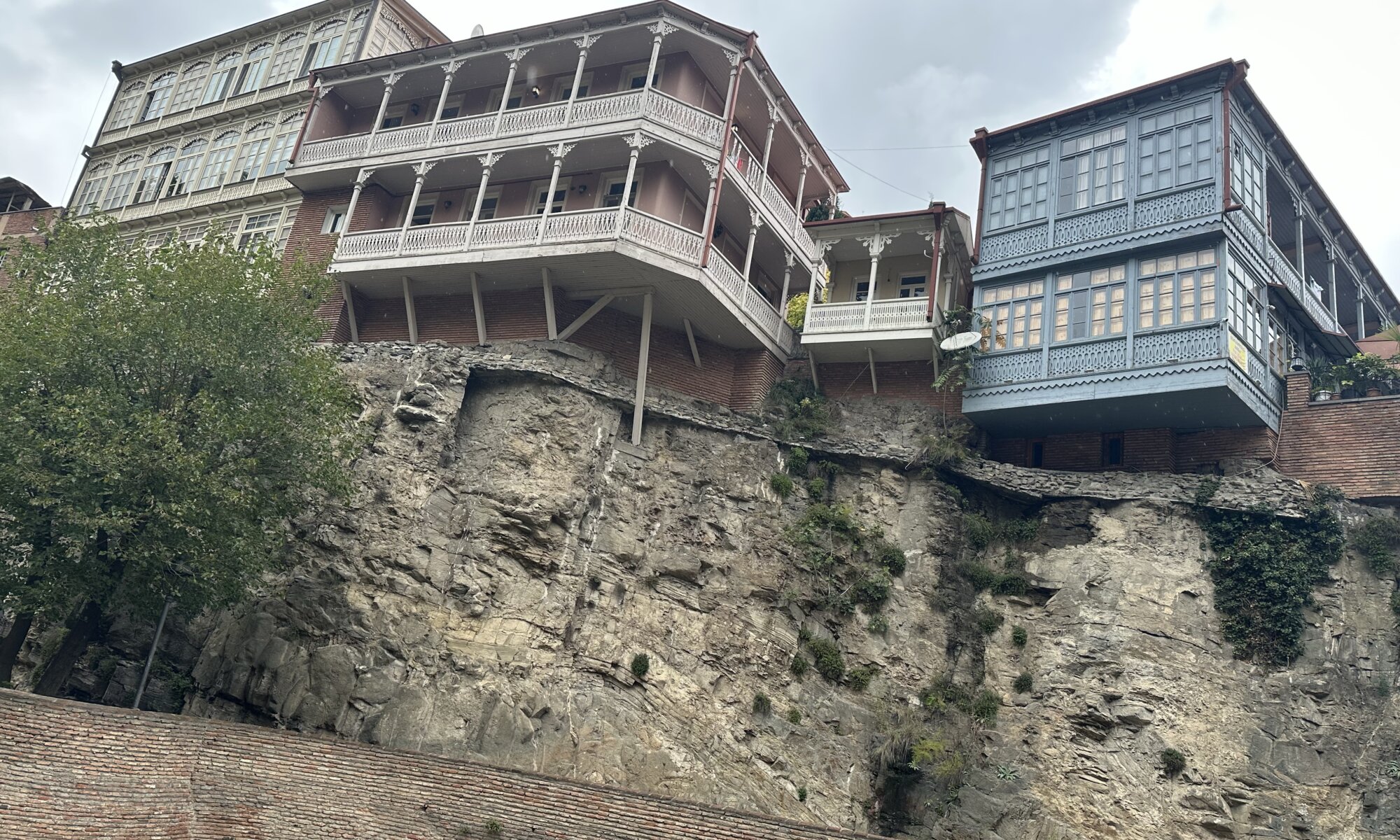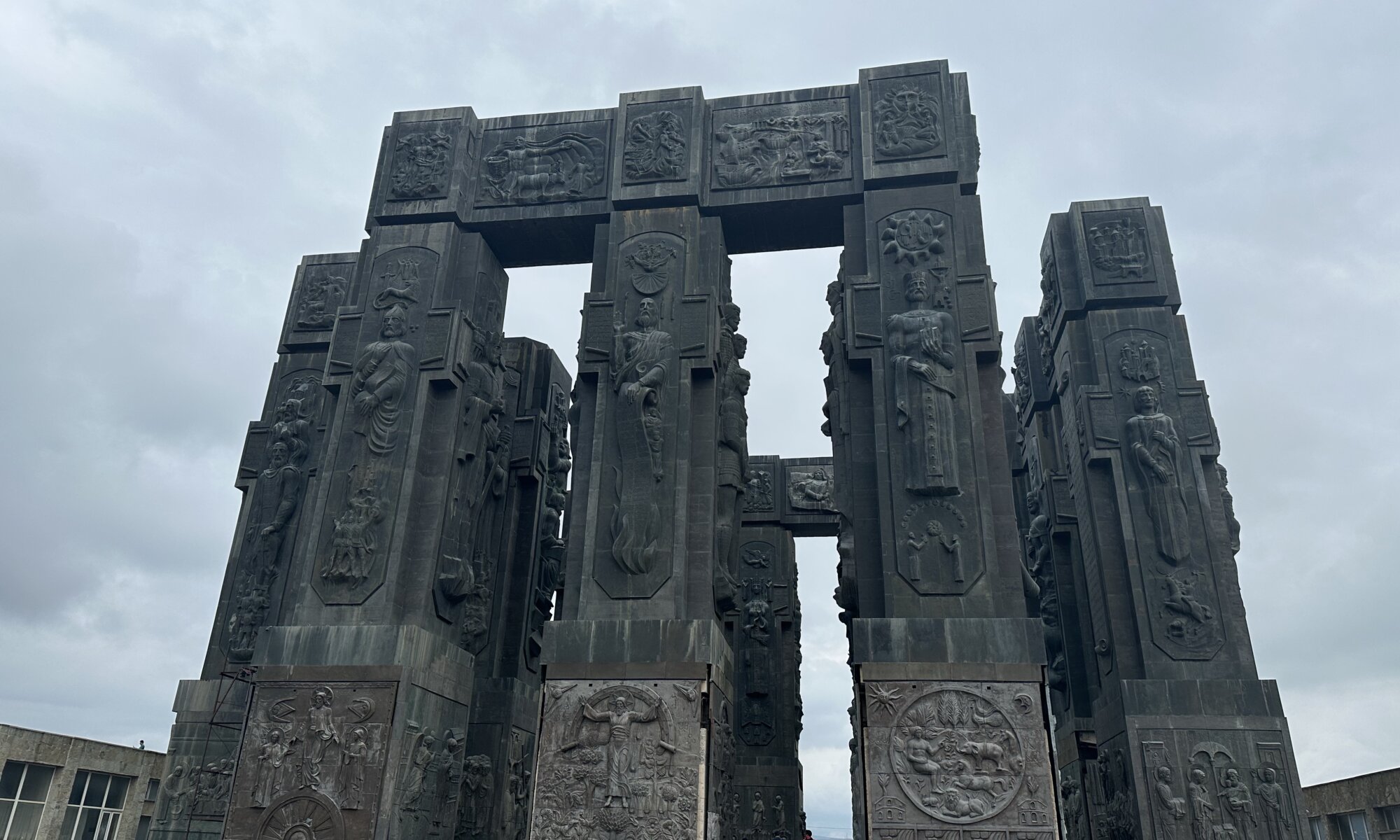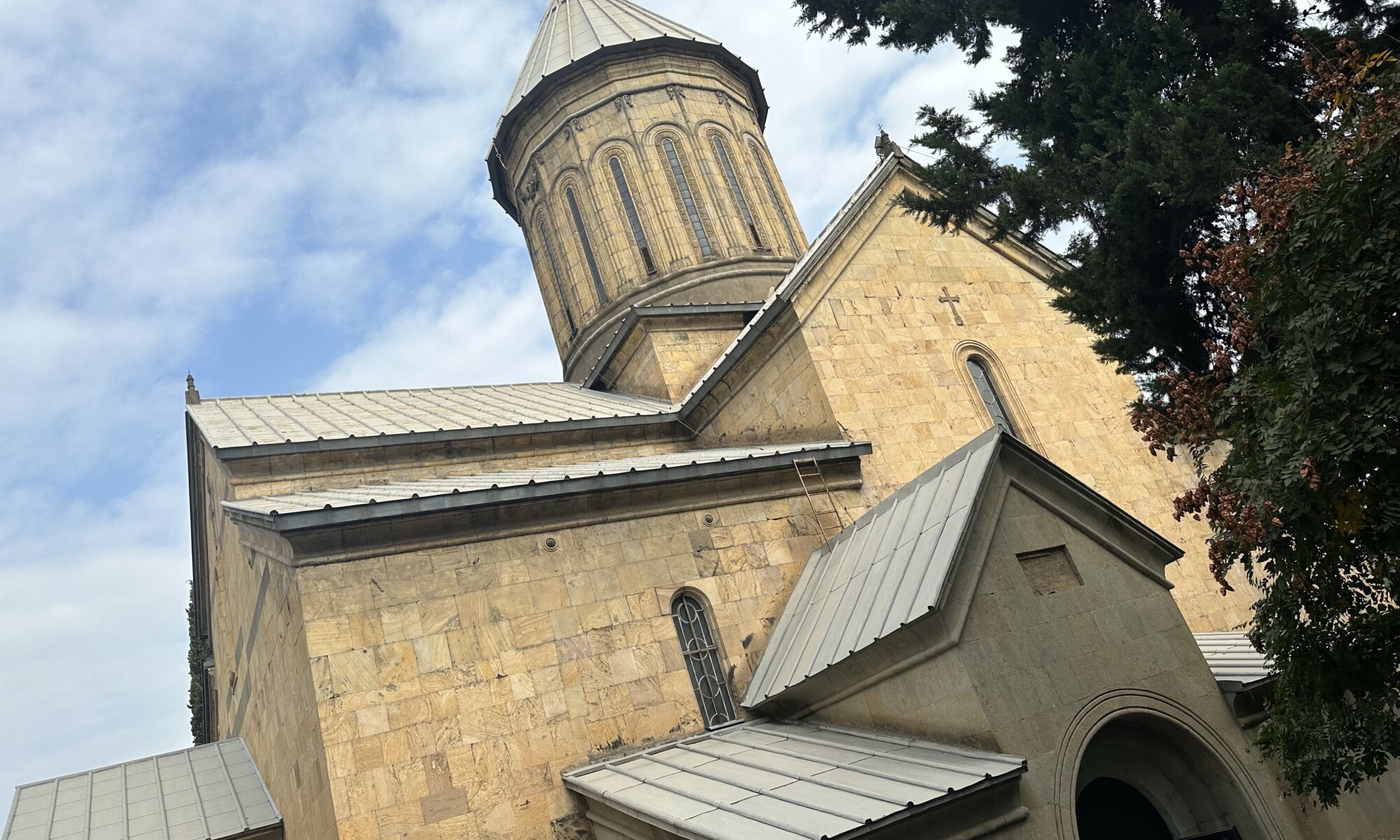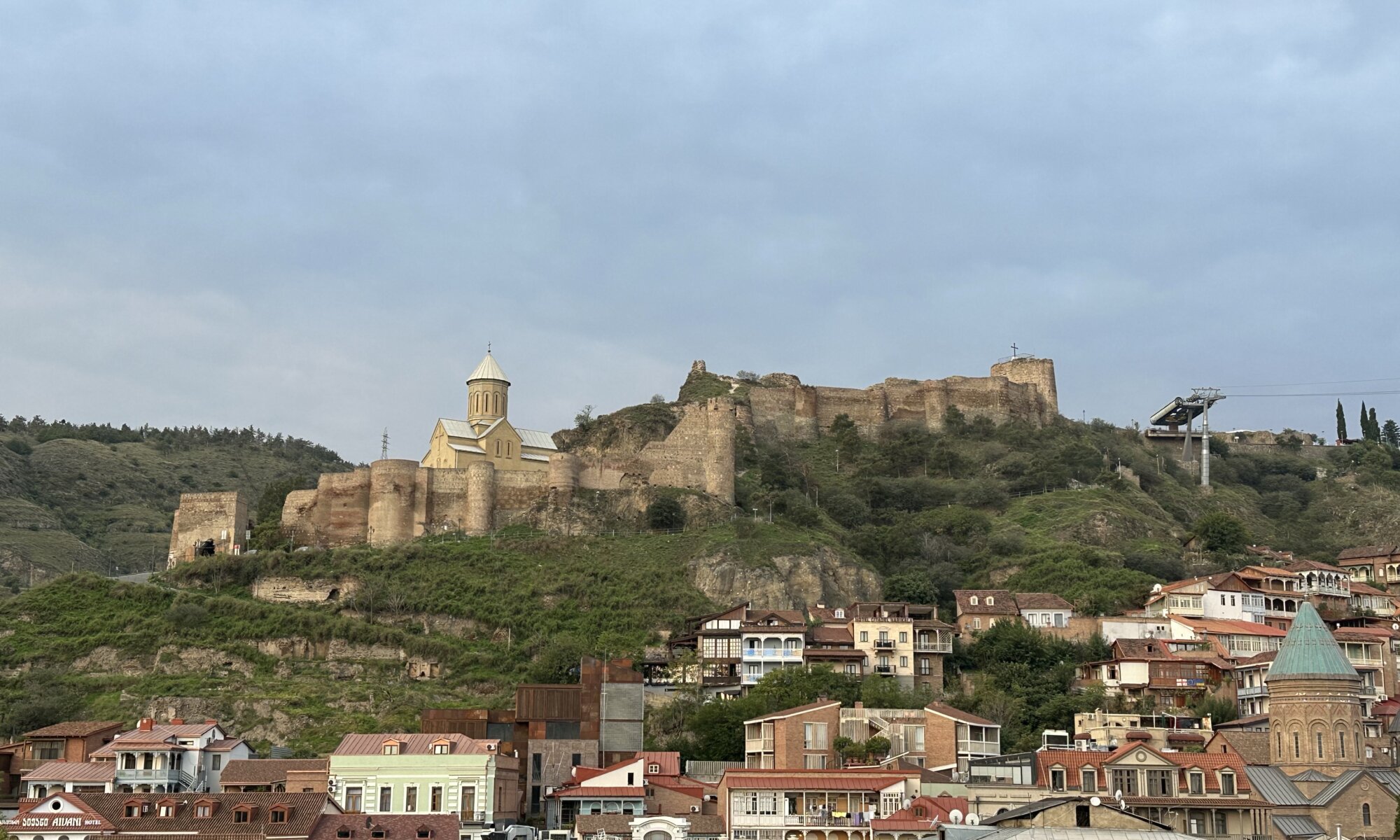The modern icon of Bakı has been built between 2007 and 2013 on a hill close to the old city center. The three Flame Towers are between 160 and 182 meters high and copy the structure of – surprise: flames. In daytime they’re just strangely shaped skyscrapers dominating the skyline. After sundown they become screens that show three things continuously rotating: the Azerbaijan flag, people weaving the Azerbaijan flag and most impressive, huge flames.
Continue reading “Flame Towers”İçəri Şəhər
Bakı, the capital city of Azerbaijan, has in most parts a very modern face: mostly the money gained by SOCAR (the State Oil Company of Azerbaijan Republic) which owns all oil and gas resources of the country has driven the development of high skyscrapers and special architectures often created by international architects. And that is nothing new: it started with the first drilling for oil in 1846. The Nobel family (today known for the science and peace prizes of Oslo) came to Bakı and founded the Nobel Brothers Petroleum Producing Company.
Continue reading “İçəri Şəhər”Şirvanşahlar
The palace of the Shirvanshah at the historic city center (İçəri Şəhər) of Bakı is the perfect place to re-enact the folktales of One Thousand and One Night. It is a wonderful palace on a hill with strong fortifications, Arabic decorations, a garden, the mausoleum, a mosque and the beautiful Murad gate. Very good reasons for a visit and for including it into the list of UNESCO World Heritage sites in the year 200.
Continue reading “Şirvanşahlar”Qız Qalası
One of the places often visited first at Bakı is the Maiden’s tower or Qız Qalası. It is part of the fortifications of the old city center İçəri Şəhər and together with it a UNESCO World Heritage site. The foundation of the tower seems to date back to the 5th century CE, it is nearly 30 meters high and the walls are five meters thick. The top has been rebuilt several times as it was the place where cannons were stationed to protect the harbor.
Continue reading “Qız Qalası”Mtatsminda
The highest mountain of თბილისი is easy to spot: on top of the holy mountain (Mtatsminda) the TV tower with its special shape is located and it is illuminated at night. The 750 meters high mountain is holy because Davit came to Georgia in the 6th century CE to teach Christianity to the Georgians. He was living in a cave within the Mtatsminda and often went to the city to preach. Later the inhabitants turned against him and went to the David Gareji monastery until the end of his life.
Continue reading “Mtatsminda”Leghvtakhevi
It is one of the coziest places of თბილისი: the Leghvtakhevi canyon. From the Metechi church you can see the spa quarter on the opposite side of the Mtkwari river. A tiny stream runs through this quarter and you can follow it on narrow paths and by passing on several bridges. Atop the high rocks next to it houses are standing directly at the chasm and their balconies are also reaching out; a really nice view. At the end of the canyon you will find the small Leghvtakhevi waterfall.
Continue reading “Leghvtakhevi”Chronicle of Georgia
It is one of the lesser visited sights at თბილისი, probably because it is located outside the city center on a hill and you need to travel by taxi to get there. You can also reach this place by metro and bus if you like to accept the challenge – it takes you to the suburbs of the capital city and shows you ordinary life. The Chronicle of Georgia is an impressive monument created by Zurab Konstantinovich Tsereteli in 1985, still during Soviet time. The massively high columns were never fully completed and show the history of Georgia at the top and the story of Christ at the bottom.
Continue reading “Chronicle of Georgia”Sioni
At the touristic center of თბილისი, next to the city history museum and river Mtkwari you can find the Sioni cathedral some meters below todays street level. It is a classic Orthodox church building like you can find them throughout all of Transcaucasia – but for the Georgian Christians it is the most important sacred place dating back to the year 575 CE. It is named after Mount Zion, the temple mount in Jerusalem.
Continue reading “Sioni”Nariqala
The city of თბილისი was one protected by the fortress Nariqala – which translates to ‘impregnable fortress’. It was created in the 4th century CE by the Persian Sassanids and was altered by Vakhtang I of Iberia as well as by Arabs, Mongols, Turkish and Persian forces. Today entering the fortress through its main gate might be a bit disappointing as the walls look pretty new and a modern style church is built within. Really impressive is the upper part of the fortress that is a citadel standing at three sides directly at the abyss.
Continue reading “Nariqala”Kartlis deda
Since 1958 a giant woman made of wood and covered in aluminum is standing high above the city of თბილისი. Kartlis deda, the mother of Georgia, symbolizes the city of Tbilisi and carries a bowl of wine for her friends in one hand and a sword for her enemies in the other. It was erected for the 1500th anniversary of the city and in 1997 it received an update: now holding her head up high and crowned with laurels. The monument reminded me much to the Mother Armenia at Երևան.
Continue reading “Kartlis deda”
